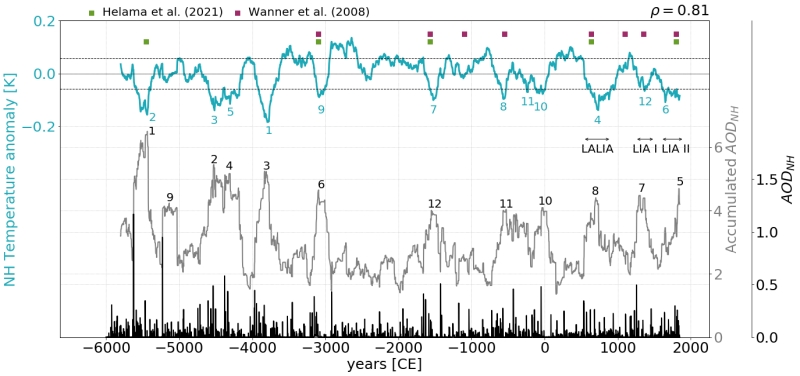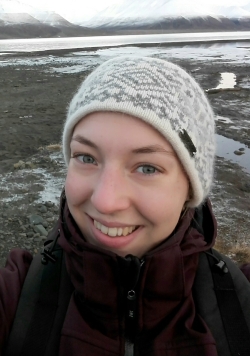Disputas og prøveforelesning vil bli holdt i Auditorium 1, Geologibygningen. I noen tilfeller vil det være mulig å delta på prøveforelesningen og disputas digitalt, i så fall blir det lagt ut en lenke til Zoom.
Prøveforelesning
Torsdag 15 desember, 15:15-16:00, Aud 1, Geologibygningen:
Natural processes as analogues for solar radiation management – scientific, societal and ethical challenges
Kreeringssammendrag
Vulkanutbrudd kan forårsake langvarige avkjølingsperioder, og det er kjent at dette skjedde regelmessig mellom 6000 f.Kr. – 1850 e.Kr. på den nordlige halvkule. En av de kaldeste periodene var på midten av 600-tallet da to store vulkanutbrudd satte i gang en langvarig nedkjøling som varte i mer enn 20 år. Kuldeperioden hadde alvorlige konsekvenser på landbruk og samfunnet i Sør-Norge, og medførte at gårdene ble forlatt. I avhandlingen er kuldeperiodene dokumentert gjennom klimamodellsimuleringer, vekstgradsmodell, samt lokale pollendata og arkeologiske bevis.
Hovedfunn
Populærvitenskapelig artikkel om Dijks avhandling:
A Tale of Fire and Ice: How clusters of large volcanic eruptions shaped climate and societies of the mid- to late-Holocene
During the last 8000 years, clusters of extremely cold years occurred, which according to our climate model simulations can only be explained by large explosive volcanic eruptions. Volcanic-induced multi-centennial cold periods occurred once or twice per millennia throughout this Holocene period. The fourth-coldest of these long-lasting cold periods took place during the mid-6th century. Our model simulations reveal that due to the volcanic-induced surface cooling, Arctic sea ice extended further south, creating a heat exchange barrier between the ocean and the atmosphere. In addition, the ocean heat transport into the Arctic was reduced, leading to prolonged surface cooling.
Our climate model simulations for the mid-6th century scenario combined with a growing-degree-day model and local pollen records reveal that this cooling had a severe impact on societies in Southern Norway. The mountainous inland study area as well as the west coast of Norway experienced a reduction in agricultural activity and farm abandonment, whereas in the Oslo fjord area agriculture and society were hardly affected. The presented model results for the Holocene can support the paleoclimate community in identifying cold periods found in local paleoclimate records and can be used to improve our understanding of future climate.

Foto og annen informasjon:
Pressefoto: Evelien Jacoba Cornelia van Dijk, portrett; 800px. Foto: Privat
Annet bildemateriale: Figur med beskrivelse og kreditering som spesifisert i artikkelen over, størrelse 1300px.
